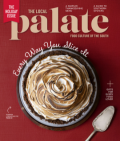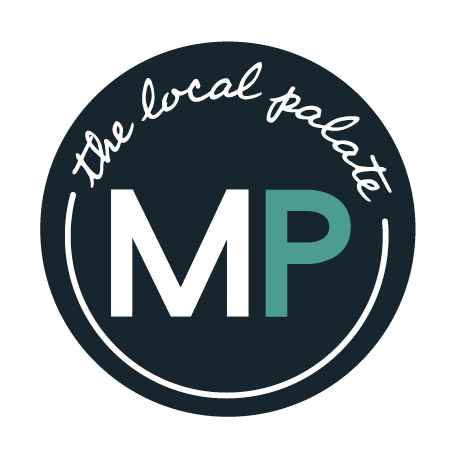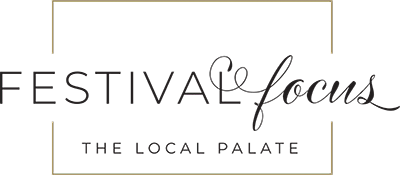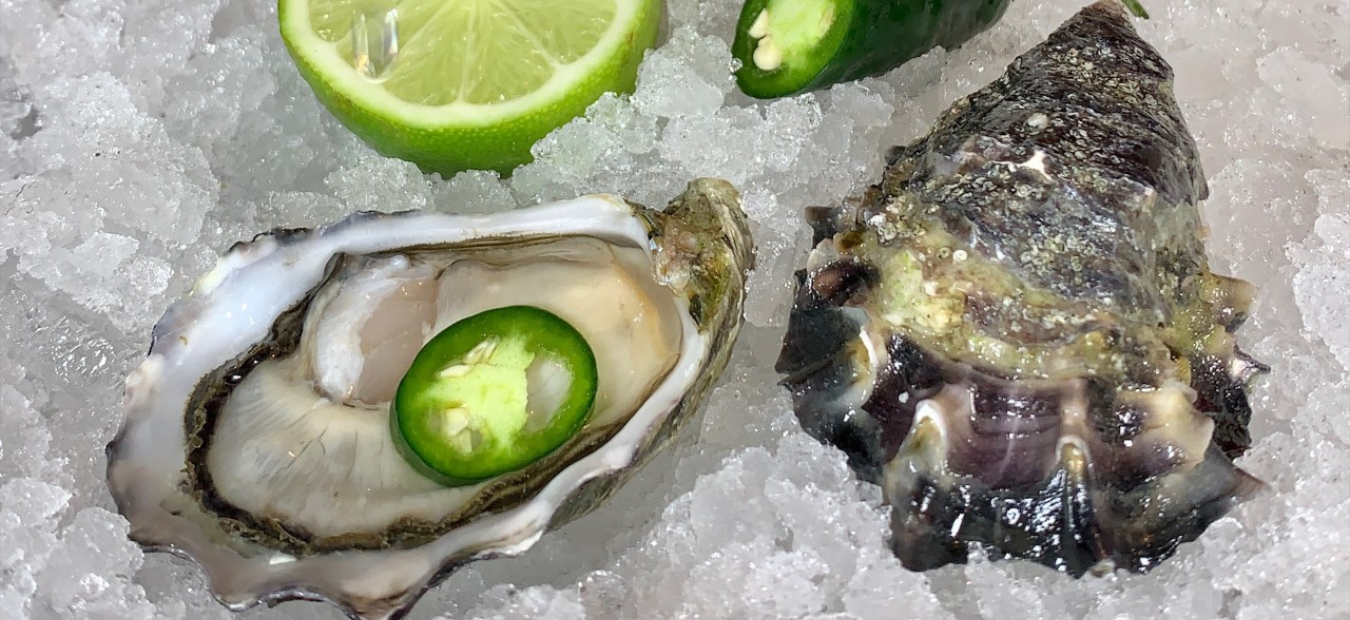Kevin Joseph creates a habitat for sustainable seafood in omaksae dining at Raw Lab
“That is a master class in how to dress an oyster or how not to dress an oyster. The best example of that is cocktail sauce.”
This was master mermellier Kevin Joseph’s response to my observation that I could taste each individual element in the smoky mezcal-and-jalapeno-dressed oyster he’d just served.
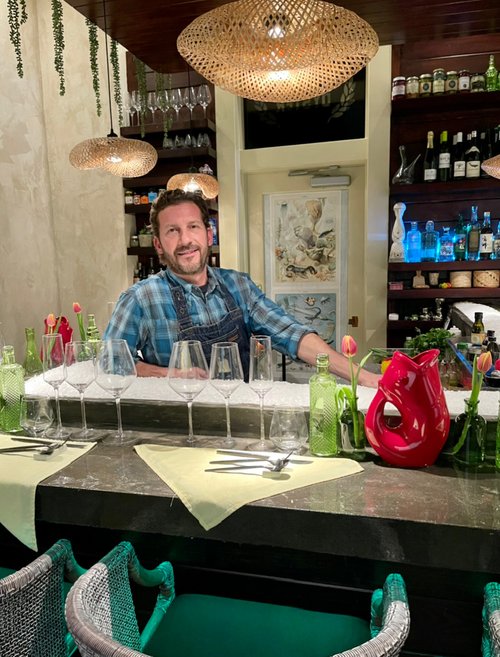
But Raw Lab, open since February 2022 on Charleston’s historic Market Street, is a master class in much more. They teach how to eat and appreciate sustainable, bioavailable, nutrient-dense seafood. Joseph’s professorial style is delicious “edutainment.” He calls himself “the anti-chef,” saying, “I don’t belong in a kitchen. I’m at my best and happiest when I’m interacting with guests, making them laugh, letting them say fun things that make me laugh. I even enjoy the same jokes I tell every night.”
When it comes to “the world’s only omakase raw bar experience,” however, Joseph’s penchant for originality is on full display. He lists Jacques Cousteau, Julia Child, and Jack LeLanne among his sources of inspiration, or, as he says, “people I refer to as originals, people who created a new way of
promoting a passion.”
The Raw Bar itself
His passion is Marine Cuisine. He coined and trademarked this phrase to describe the culinary ethic behind his eleven-course tasting menu at Raw Lab. “The Marine Cuisine philosophy is bottom of the seafood chain, nothing weighs more than twelve, fifteen pounds, only farm product that uses best practices. It has to be whole, live, raw, or bioavailable—that’s mostly preparation. I can’t break those rules or I contradict myself. So everything you eat in that room, everything that winds up on the menu has been truly vetted.”
The Marine Cuisine philosophy is at the bottom of the seafood chain. . . It has to be whole, live, raw, or bioavailable.
The dining room itself is intimate. It seats twelve people max at a square-horseshoe-shaped stone bar with an ice-filled trench running around its entire length. Joseph stands in the center, where he—with some assistance—prepares and serves each course directly on the ice, pours Champagne and wine pairings, cracks jokes, and offers pearls of wisdom such as, “Think of oysters as marine grapes. They have a merroir like wine has a terroir.” (Hence his coinage of the term mermellier.) He shucks more than half a dozen oysters for each guest bare handed, not a glove or bar rag in sight.
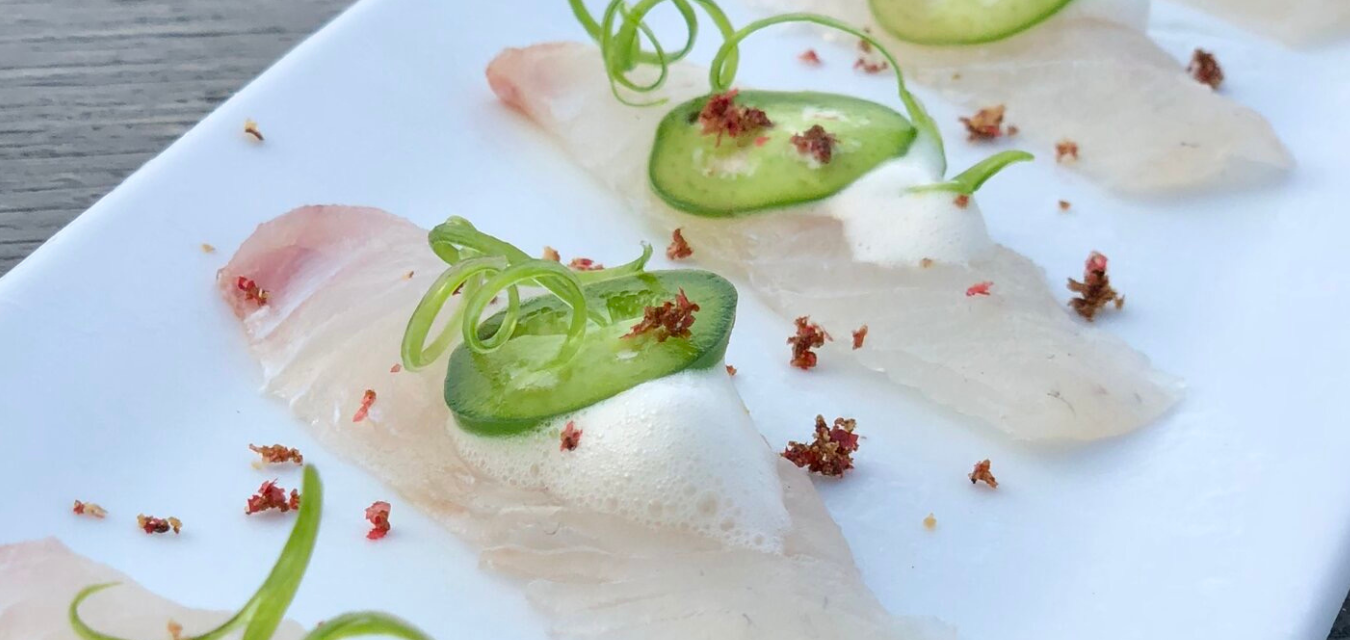
“Champagne is the answer to the question, what do you drink with oysters,” he tells us, pouring from a bottle of Delamotte brut. Then he pauses for dramatic effect: “What do you drink when you run out of Champagne? And the answer to that is muscadet.”
If you’ve never had an oyster dressed with fresh horseradish and lemon or wasabi and lime, you haven’t lived. Joseph grates the spicy roots on a block stretched with stingray skin, and the resulting combinations are so good you have to close your eyes to truly enjoy them. This is followed by the aforementioned mezcal-and-jalapeño combo, a variety of housemade mignonettes, and, finally, cold-smoked oysters, complete with a light show and curated playlist.
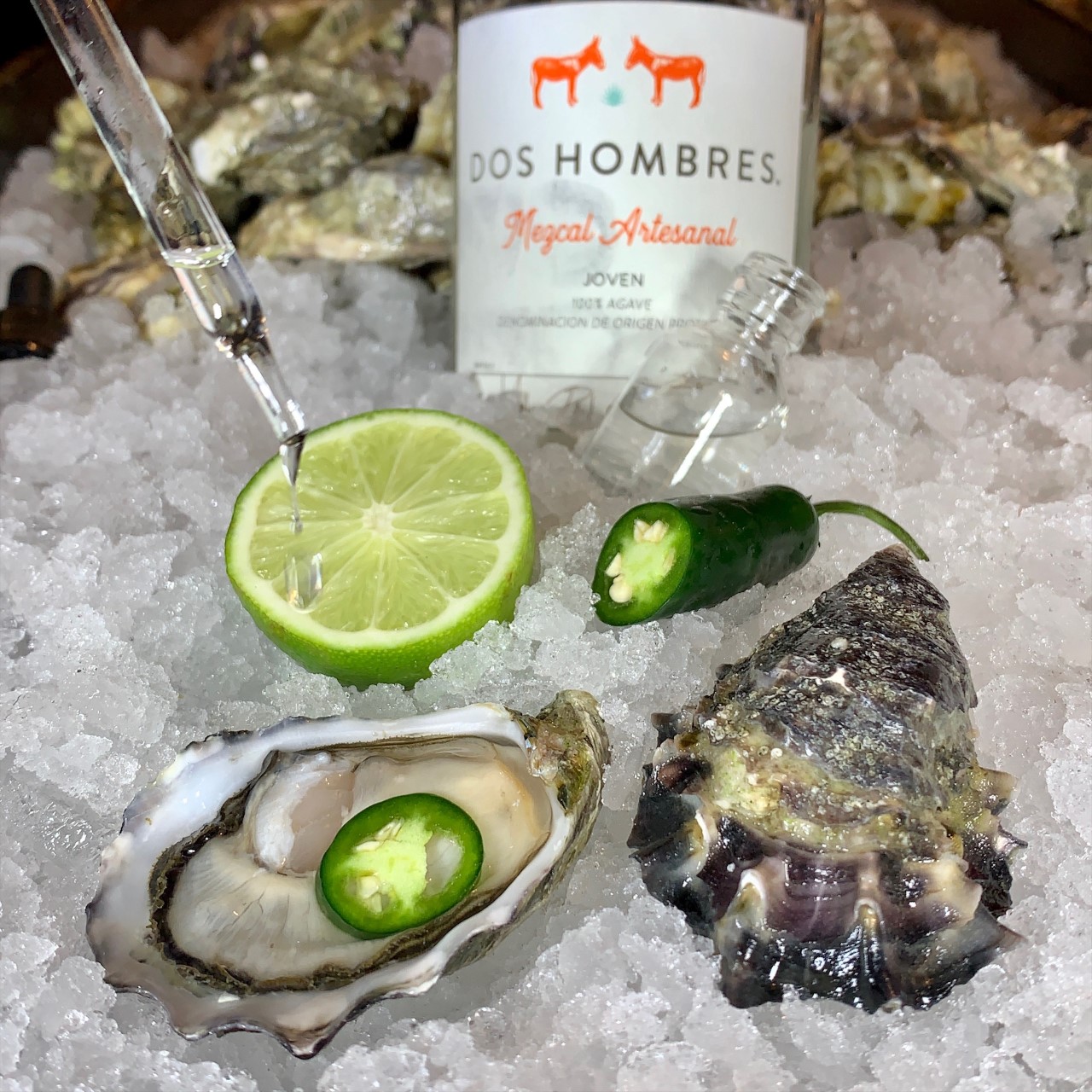
And that’s just the end of round one. The rest of the evening unfolded with bumps of caviar, gazpacho seasoned with Old Bay and finished with txakolina, beet-marinated salmon sashimi, Carolina shrimp ceviche served in pulverized-prawn-shell puffs, lobster Caesar salad, Dungeness crab petals, and a salmon tartare
tower, served with dramatic humor to the theatrical tones of Strauss’s “Also sprach Zarathustra.” However, the menu, by its very nature, changes.
“I don’t choose the menu; the menu chooses me—because seafood doesn’t work like that,” Joseph says. “It’s not a commodity. It’s much harder than terrestrial farming to control your inventory. What gets caught or what gets grown is variable. So my menu changes because I can
or cannot procure something.”
That said, he wants to educate the world about why Marine Cuisine, and oysters in particular, are the perfect crop. Joseph says, “I’ve looked hard, and I don’t think there’s another food that’s grown more sustainably or more responsibly. You can put a million oysters on an acre. You can’t put a million cows on an acre. They don’t require any watering and they don’t require any feed. And they provide habitat—up to 200 creatures can live within the bags and cages of an oyster farm, cephalopods and crabs and little fish. It’s an engineered nursery.”
He’s found that more and more, this sustainable ethic is resonating with consumers who have money and influence to spend. That’s a deliberate part of his strategy. Raw Lab is designed to appeal to people in a way that engages them personally in ecological investment. “Putting the food in their mouth matters. We need to protect, preserve, and restore these places our food comes from, or we won’t have it. And what better way to demonstrate that and develop a love for it and a passion for it than to serve it with passion?”
I couldn’t agree more.
share
trending content
-
FINAL Vote for Your Favorite 2025 Southern Culinary Town
-
Get To Know Roanoke, Virginia
-
Shrimp and Grits: A History
by Erin Byers Murray -
New Myrtle Beach Restaurants Making Waves
-
FINAL VOTING for Your Favorite Southern Culinary Town
